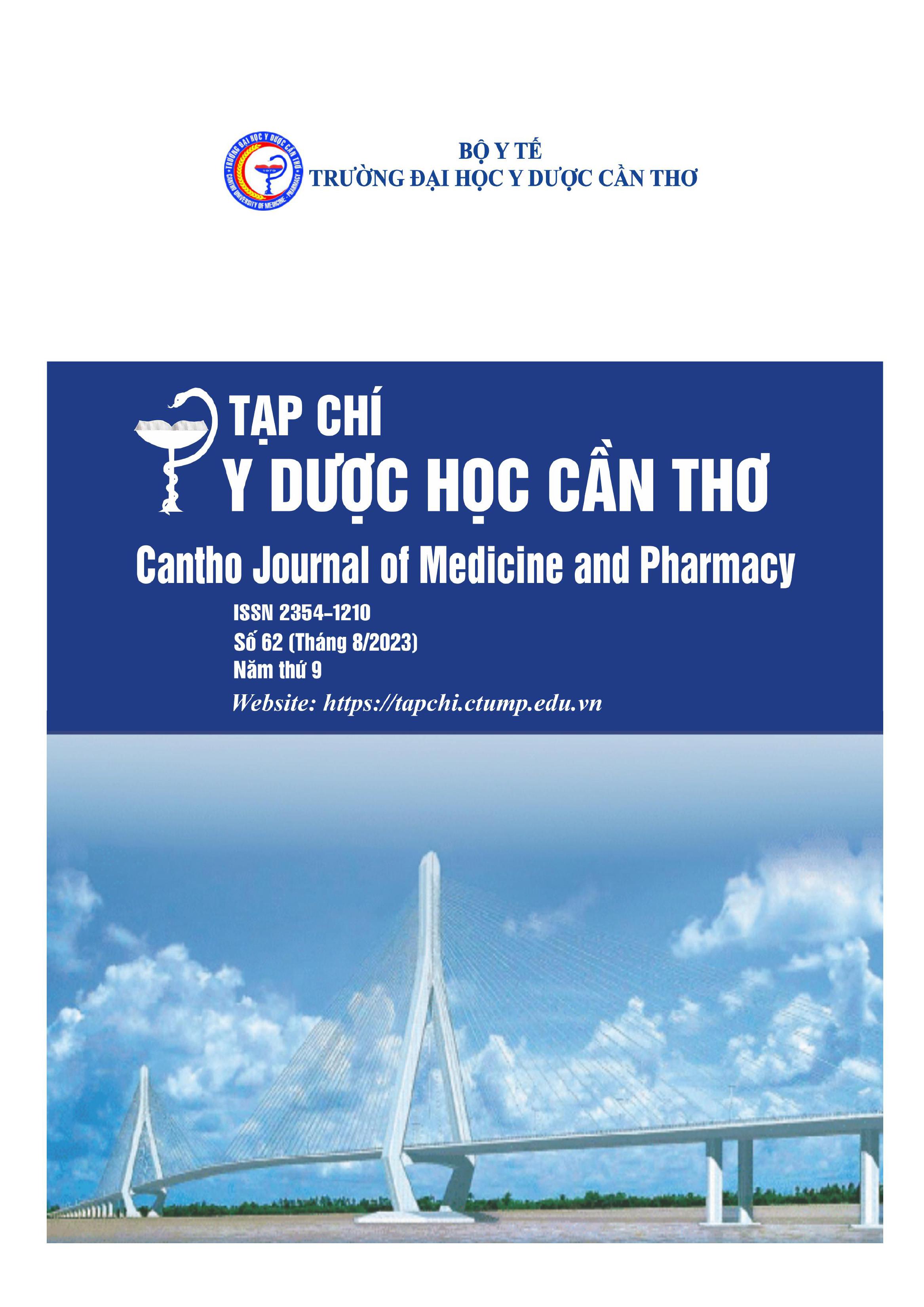STUDY ON HEMATOLOGICAL PARAMETERS AND HB ELECTROPHORESIS PROFILE TEST RESULTS IN PATIENTS WITH BETA-THALASSEMIA AT CAN THO HEMATOLOGY - BLOOD TRANSFUSION HOSPITAL IN 2021-2022
Main Article Content
Abstract
Background: The screening and diagnosis of beta-thalassemia need to be based on clinical features and laboratory results. The Mekong Delta has a high proportion of patients or carriers of betathalassemia gene among thalassemia patients, but there are few studies on the subclinical value of the disease, especially hemoglobin electrophoresis. Objectives: To describe results of complete blood count and hemoglobin electrophoresis of beta-thalassemia disease types. Materials and method: A crosssectional descriptive study was conducted on 45 patients with beta-thalassemia who came for examination and treatment at Can Tho Hematology - Blood Transfusion Hospital from June 2021 to June 2022. Results: In the 45 cases we studied, the average of the parameters on the results of complete blood count were: red blood cell count (RBC) 3,07 ± 0,99x1012/L, white blood cell count (WBC) 11,75 ± 7,22x109/L, platelet count (PLT) 355,16 ± 225,22x109/L, hemoglobin level (Hb) 6.51 ± 1.64 g/dL, mean corpuscular volume (MCV) 69.64 ± 9.13 fL, mean corpuscular hemoglobin (MCH) 21.88 ± 3.39 pg and red cell distribution width (RDW) 26.22 ± 6.89%. Besides, on hemoglobin electrophoresis results, the average HbA1 rate was 33.42 ± 37.61%, the average HbA2 and HbF were 4.71 ± 1.82% and 37.45 ± 26.11%, respectively. HbE was detected in beta-thalassemia/HbE with an average rate of 43.86 ± 9.13%. Conclusion: Beta-thalassemia disease changes the parameters on the results of complete blood count: RBC, WBC, PLT, Hb, MCV, MCH all decrease and the RDW increases; change the rate of hemoglobin components on hemoglobin electrophoresis results, specific for each disease type.
Article Details
Keywords
Beta-thalassemia, complete blood count, hemoglobin electrophoresis
References
2. Bộ Y tế. Hướng dẫn chẩn đoán và điều trị một số bệnh lý huyết học. 2022. 20-31.
3. Nguyễn Ngọc Việt Nga và Lâm Thị Mỹ. Đặc điểm bệnh thalassemia tại bệnh viện Nhi đồng Cần Thơ từ 12/2010 đến 06/2011. Y học TP. Hồ Chí Minh, 2012, 16(1), 51-56.
4. Nguyễn Khắc Hân Hoan, Phạm Việt Thanh và Trương Đình Kiệt. Chẩn đoán trước sinh bệnh thalassemia trên 290 trường hợp thai. Tạp chí nghiên cứu y học, 2010, 3, 1-7.
5. Nguyễn Hoàng Nam. Nghiên cứu kiểu hình và kiểu gen ở bệnh nhi beta-thalassemia. Luận án tiến sĩ y học, Đại học Y Hà Nội. 2019.
6. Nguyễn Thị Thanh Hà. Chẩn đoán trước sinh di truyền cho thai ở 27 cặp vợ chồng mang gen thalassemia tại bệnh viện phụ sản Mê Kông. Y Học Thành phố Hồ Chí Minh, 2014, 18(1), 126-131.
7. Phạm Thị Ngọc Nga. Nghiên cứu sự di truyền các đột biến gây bệnh ở bệnh nhân betathalassemia vùng Đồng bằng sông Cửu Long bằng kỹ thuật sinh học phân tử. Luận án Tốt nghiệp Tiến sĩ, Viện nghiên cứu và phát triển công nghệ sinh học, Trường Đại học Cần Thơ. 2017.
8. Cappellini MD., Farmakis D, Porter J and Taher A. Guidelines for the management of transfusion dependent thalassaemia (TDT). Thalassemia International Federation. 2021.
9. Kenneth Kaushansky, Marshall Lichtman, Josef Prchal and Levi M. Williams Hematology. McGraw Hill. 2016. 725-788.
10. Nguyễn Thị Mai Anh. Đặc điểm các chỉ số hồng cầu trong chẩn đoán thiếu máu thiếu sắt và βThalassemia. Tạp chí Y học Việt Nam, 2015, 434, 81-82.
11. Shirlyn McKenzie and Lynne Williams. Clinical Laboratory Hematology (Pearson Clinical Laboratory Science Series). Pearson. 2014. 251-274.


